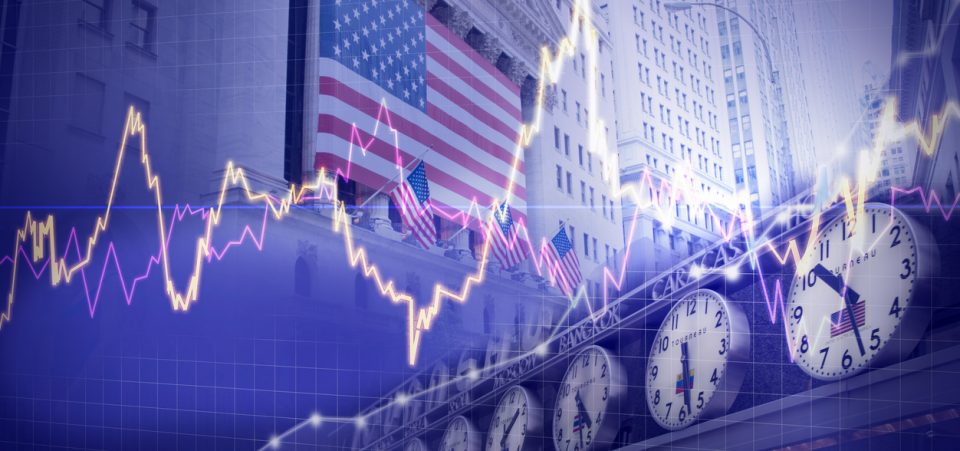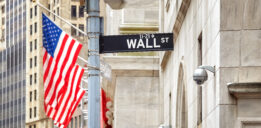Higher Interest Rates and Protectionism Will Hurt the U.S. Economy in the Long Run
It may seem that the U.S. economy has not performed this well since almost four years ago, at least in statistical terms. But appearances, as the old saying goes, are deceiving.
U.S. gross domestic product (GDP) grew at a rate of 4.1%. There are two walls blocking the U.S. economy in the next few years. The first wall is the Federal Reserve’s nominal interest rate; the second is protectionism.
Meanwhile, the whole world is watching closely because no country, no matter how small or large, can thrive when the U.S. economy suffers.
Interest Rates Going Up Too Fast
Unfortunately, President Donald Trump can only manage the protectionism barrier. He has no say over the nominal interest rate, which may be going up too fast for the economy to absorb.
The Federal Reserve’s decision to raise interest rates will prove to be premature at best for the U.S. economy. And when the U.S. economy hurts, there are repercussions for the world.
If the U.S. economy appears to be moving in a favorable direction, you can thank the Federal Reserve’s expansive fiscal policy. Chair Jerome Powell’s decision to raise interest rates at an even faster pace than expected when he took over from Janet Yellen could be premature. Thus, it’s also premature to celebrate the 4.1% GDP growth rate.
It remains to be seen whether the U.S. economy can sustain the burden of the two additional increases in the federal rate this year—and at least three more in 2019.
Knee-Jerk Reactions and Economic Contractions
Like a Pavlovian dog, the Fed has increased interest rates to hedge against inflation, keeping it at no more than two percent.
Similarly, investors have reacted on cue. They’re buying up dollars because economic theory holds that the U.S. dollar appreciates when interest rates increase, altering the risk/reward picture that fueled the financial recovery after 2008.
Apart from the probability of many emerging economies (which have borrowed dollars) to collapse under the weight of the higher U.S. currency, the Fed’s accelerated restrictive monetary policy could force the U.S. economy to contract.
Not only will businesses find it harder to borrow and invest in growth, but millions of ordinary citizens will stifle under the pressure of their loaded credit cards and other debts, such as mortgages, car loans, and student loans.
Too Much Show, Not Enough Substance
The booming U.S. economy is actually more mirage than reality. Rather than growing on government and corporate expansion, with relative gains in well-paying jobs, it’s the bottom tier of society that has propped up the 4.1% GDP figure.
One of the unusual features of the past few years of growth—or rather, post-financial-crisis recovery—is that the bottom 60% of wage earners were the ones to lead. A healthier recovery would have been led by the top 40%. (Source: “Mortgage, Groupon and card debt: how the bottom half bolsters U.S. economy,” Reuters, July 23, 2018.)
The Message From Treasury Yields
A higher interest rate in this scenario is the economic equivalent of cutting off the fuel line in a car; it will simply grind to a halt at the first obstacle. And there just happens to be an obstacle in sight.
Consider the 10-year Treasury yield as the barometer of U.S. financial risk. The higher the Treasury yield, the higher the incentive for investors to shift from high-risk investments like equities to lower-risk government-issued debt.
The 10-year Treasury is steadily moving higher; on August 1, it reached three percent. However, Trump’s trade wars with China, Europe, and Japan will push it to unsustainable levels.
Apart from foreign governments’ retaliatory measures targeting American products, the U.S. will be forced to issue more debt (bonds, Treasuries, etc.) to contain the overflowing federal debt. The tariffs and the resulting global trade slowdown, however, will make it harder to find foreign governments willing to buy those Treasuries.
That will drive yields. Only if Americans start saving more—and the government starts spending less—will this situation be sustainable to financial markets.
The Federal Reserve, in such a scenario, could be tempted to push interest rates even higher to encourage saving. That would be a death warrant for growth, throwing the U.S. economy into recession.
Promoting U.S. Industrial Base: A Good Idea, But…
President Trump’s idea to promote the U.S. industrial base to revive the real economy and the creation of well-paying jobs is correct. To do so by imposing tariffs and launching a trade war, however, will backfire.
Trump should be commended for bringing back factories to America. Isolating the U.S. economy from the rest of the world can only work for a limited period though.
The name of the game in the capitalist economy is a constant increase of opportunity and markets: perpetual growth.
The American economy is large enough (in terms of population) to absorb higher domestic production of cars, appliances, or raw materials. But sooner or later, domestic demand will be satiated. In other words, U.S. companies, once revived, will be seeking foreign markets in order to expand their sales.
By then, it will be too late. Having isolated itself and having destroyed the current global trade order, U.S. companies will not have guaranteed access to markets. They will be shut off.
This is what happened in the 18th and 19th centuries. It led to colonialism and wars, and Trump’s protectionism could end up leading the U.S. into new wars—as well as killing growth.






